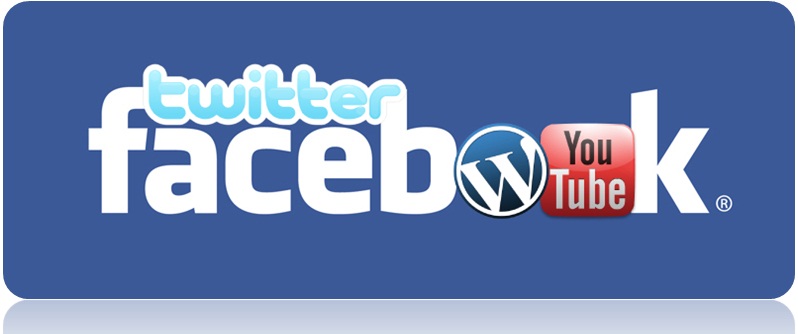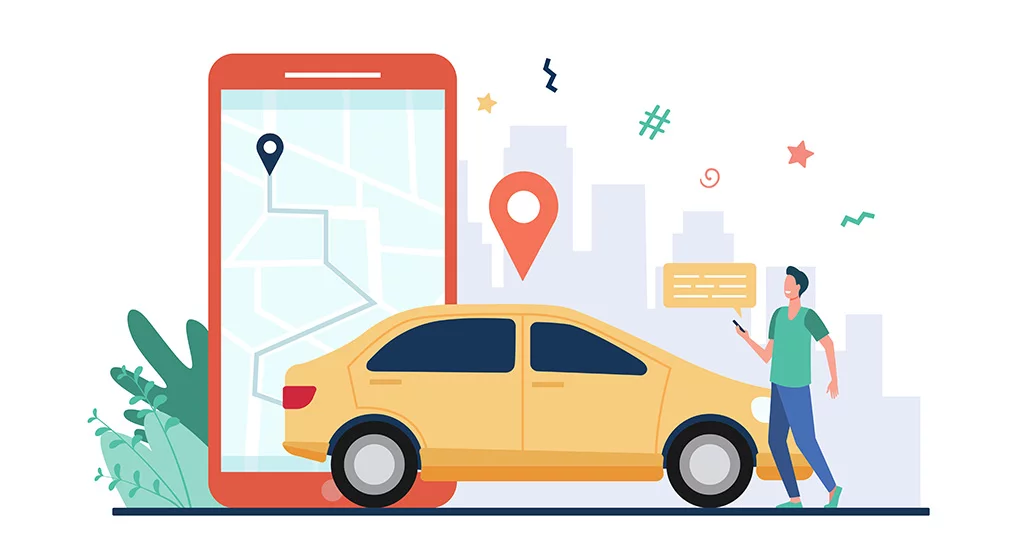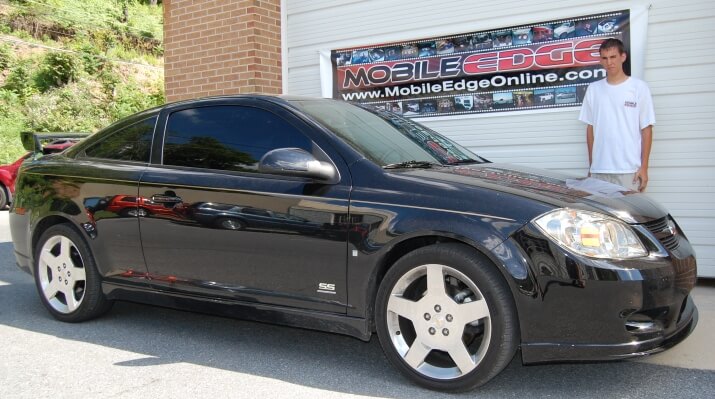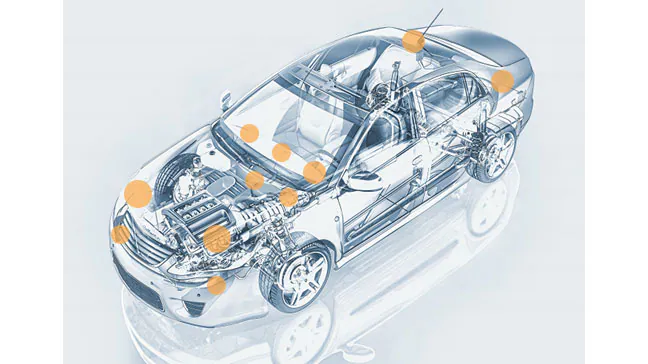There is a shift happening in the automotive industry when it comes to marketing from the dealers up to the OEMs. New Media (which includes social media, mobile, local marketing, search, etc) has witnessed hesitant adoption over recent years in the industry, but the last 12 months has seen a tremendous spike. It’s almost a complete turnaround and in some cases, traditional marketing has been completely abandoned.
“Over the last 3 years the Kelly Automotive Group (10 Franchises) has shifted our advertising budget from 95% traditional marketing and 5% online media marketing to a 55%/45% split,” said Chris Saraceno, Vice President of Kelly Automotive.
What happened? How did the industry go from a position of being behind in social and other forms of new media marketing just a year ago to being loaded with local businesses and corporate entities that are now leading the charge and blazing the trail?
Why the Switch?
The people have spoken.
They like smartphones. They trust reviews by real people more than they trust “experts.” The use Facebook… a lot. When they want to buy a car, they don’t turn the television on to start doing research. They don’t hear ads on the radio and make a u-turn to head to the dealership.
People like new media and the Internet in general and they’re using it to do the heavy lifting when making car buying decisions.
Dealers get it. In an industry that is notoriously reluctant to embrace new technologies, a combination of results and the survival instinct are pushing them to go further. Rather than being the late adopters, the industry is helping to set the trends with innovative ideas and aggressive techniques.
“As dealers invest in digital marketing education they are starting to understand how search and social work to amplify their brand online,” said Brian Pasch, CEO of PCG Digital Marketing. “This new knowledge is connecting their entrepreneurial nature with the power of new media. When the light bulb goes on, dealers can’t move fast enough to embrace new media opportunities.”
Even at the automotive manufacturer level (a group of entities often accused of being the slowest moving at adopting new techniques) companies like Ford (with their guru Scott Monty) and Honda are moving quickly and betting high on new media.
Let’s take a look at the different components of new media and the ways that automotive is truly making (and receiving) and impact.
Social
The phrase “New Media” is often associated with social media alone. While we believe there is more to new media than social, it’s clearly the most prevalent and has emerged as a tool with uses ranging from overthrowing governments to declaring what people had for breakfast. Facebook, Twitter, and other social media sites are accumulating a larger user base and expanding the time spent on average by their communities.
Facebook continues to make its push into the business world and is accelerating integration of Facebook eCommerce as a supplementary (and eventually a preferred) method through which business can be done online. Twitter is still the stronghold of instant news and information transfer and has become a useful marketing tool.
Dealers get it.
“The car business in America has always benefited from a good story as a means of getting the attention of prospective buyers,” said Ralph Paglia, Vice President of Tier 10 Marketing. “Whether it be which make won a NASCAR race the previous weekend or the increased horsepower of the new engine in this year’s model, stories sell! This is the essence of what has fueled the auto industry’s embracing of social media marketing.”
The personalization of the Internet has helped to transform the way dealers look at old marketing components such as branding, messaging, and engagement.
“In the 24/7 world of social media, your brand is never stagnant. It changes day-to-day,” said Jeff Cryder, Digital Communications Director at Lebanon Ford. “Your values should be consistent while your interactions are fresh.”
According to a recent automotive social media case study, Cryder and his team generated a 260% increase in Internet sales year-over-year.
Mobile
The iPad and smartphone world has empowered consumers with the ability to never be without competitive data. Millions of bar codes and QR codes are scanned weekly at retail stories to compare deals. Bad buying decisions are becoming a thing of the past.
In the automotive industry, “on the spot” price and inventory comparisons are becoming more commonplace. Dealers in particular are faced with comparison shopping that happens on the lot. Having a mobile presence is quickly shifting from a nice option to a “must have.”
Compared to social media, mobile marketing adoption has grown much more slowly. However, as dealers see an increase in the number of people comparing deals live from the dealership, new ways to address the innovation are popping up.
“We haven’t seen enough of it yet to make us jump through hoops, but we know it’s coming,” said Jerry Williams, a northwest region sales manager. “We’re making sure that people can view our inventory on any mobile device and we’re exploring ways of marketing through these technologies.”
One emerging technique is the use of text messaging to contact prospects.
“It’s less imposing than phone calls and more effective than emails,” Williams continued. “When a customer leaves, we text them with the best price we can offer. Even if we don’t get a response, we know that people are very likely to have received the message before making a decision at another dealership.”
As the technology continues to improve and consumers expand their use of mobile devices, the automotive industry will continue to try new ways to increase business through mobile.
Search
While social media is the “new sexy” in the industry, search is still the primary tool that consumers use to research different vehicles. Once they make their decision on which vehicles to consider, the go again to the search engines to find the vehicles themselves. OEMs such as General Motors may be spending millions on making a splash in social media, but they continue to use paid search as a primary means of driving traffic both to their corporate properties as well as their dealer websites.
Organic search is trending as the primary method of driving traffic at the dealer level. The vast majority of dealers in the US utilize some level of search engine optimization to help get their websites ranked higher. The industry has turned into one of the most competitive; major metros crowded with dealers and 3rd-party lead vendors vie for the top 10 spots for high-volume searches.
“It’s a mess compared to what it was like just a year ago,” said James Bradford, President at TK Carsites. “Everyone is optimizing to some extent. The difference between the dealers who are ranking at the top and the rest of the pack is in the quality of their Automotive SEO. Solutions are not created equal and those who really want to make it have to step up.”
Despite a robust and effective social media marketing strategy, Chuck Capps at Advantage Nissan is still seeing over 60% of their traffic coming from organic search. “Nearly 70% of our sales come directly through Internet engagement. We’re selling vehicles through many different channels, but search is still our bread and butter.”
As Google and Bing continue to improve the way they rank sites, dealers are focusing on getting their inventory, specials, and various profit centers on as many search results as possible.
Networks
Not every aspect of new media is customer-facing. With so many vendors, experts, and opinions floating around about which direction OEMs and dealers need to go with their marketing, many are turning towards automotive social networking sites to share and learn new ideas.
While there are literally hundreds of them out there, the 7 primary ones are:
- Driving Sales
- ADM
- DealerElite
- Dealer Refresh
- Internet Sales Managers
- Auto Dealer People
- Kain Automotive
Saraceno said, “The main reason I started DealerElite was to communicate with friends and associates that are Dealers, General Manager, General Sales Managers and Service Directors to discuss best practices for marketing our dealerships now and in the future.”
Sharing ideas and finding out what works is the key for dealers, vendors, and OEMs who are taking full advantage of what new media has to offer the industry.
Local
The concept of local marketing encompasses everything already covered. Mobile, search, and social all have branches and integration with local marketing. The component that is unique to local marketing only happens at the dealer level: reviews.
People may read individual vehicle reviews on large websites to determine what they want to buy, but determining where they want to buy often hinges on business reviews on sites like Yelp and Ratepoint. These “customer experiences” are imperative because buying a car is often considered an extreme hassle by consumers. Learning which dealerships have a history of bad customer experiences will often sway consumer choices.
Companies such as Presto Reviews help dealers address the biggest challenge in the review process: happy customers don’t write reviews. When someone is happy with a transaction, they rarely talk about it unless directly asked. When they’re unhappy, they often go out of the their way to tell anyone they can.
Proactive solicitation of reviews is a defensive but effective move that many dealers are employing. By encouraging happy customers to post reviews or testimonials about their experience, they have the best chance of being viewed well through local marketing.
Search, social, mobile – they’re all engaged in some way with local consumer feedback. Dealers are learning this; too often, they’re learning it the hard way.
The Future of the Automotive Industry
Three things are very clear and easily predictable about the future of the automotive industry:
- New media is a growing component that is attracting the attention of the world. Many in the automotive industry are going to lead the charge.
- Transparency, sincerity, and empathy are rewarded more by the consumers of today. These traits will only become more important in the future.
- Traditional forms of marketing and advertising will always have a place in the industry. They simply won’t be as effective as they’ve been in the past with more people shifting their activities online.
Paglia, whose firm handles social media campaigns for Penske Automotive, said, “When I see that my client’s race team places well at the Daytona 500, I am quick to post Kurt Busch’s results on PenskeCars because the old saying ‘Win on Sunday, Sell on Monday’ has taken on a much larger dimension with the increased ability to spread the news and have fans share the story via social media.”
This concept holds true even for dealers who do not own a NASCAR racing time. From top to bottom, the “humanization” of the industry is transforming the way OEMs, vendors, and dealers are perceived. The ones who focus on creating exceptional customer experiences will enjoy an easier path to increased sales.
Embracing new media has become a murky concept. It’s almost a cliche in that most in the industry believe it’s important but often do not know the best way to do the embracing. It is the actions of the consumers themselves that will guide how the industry adapts and grows. The current trend shows that new media is huge and continues to rise in importance.









The article is cool JD, but the advanced innovations that are surfacing in the auto retail you missed absolutely.
@D. Rawls – You’re totally right. We could write a book about the amazing innovations popping up every day. This was meant as a general sentiment overview (and even in that context it was a relatively long piece). Would love to discuss specific innovations with you if you have the time.
As always JD, very well written, I thoroughly enjoyed it! While you may not have written an all exhaustive tomb on auto retail innovations (impossible to do in this medium), as D. Rawls was no doubt looking for, you touched on some very important ones and I applaud you for writing it!
@David – actually, I’ve been dying to get a demo of what you guys do.
We should set some time aside next week to discuss that JD. In the mean time check out http://Facebook.com/MetroHonda to get an idea.. they are rockin and rollin!
Again, great post!
OK this makes a lot of sense dude. WOw.
http://www.web-anonymity.it.tc
JD, very nice write up of how the Auto industry is using some emerging new tactics to market their cars to consumers. One tactic that you may want to investigate further is how big data is changing marketing for the auto industry. Marketers now have the ability to tie all these different tactics you mentioned about, and many more you didn’t, together – to make the entire marketing experience more relevant to a consumer.
For instance, should you treat someone who visits your site who came from facebook the same as someone who searched Google for a specific make/model? Should you put an advertisement in front of a person who just “Built their own Ford Mustang” – what should the ad say? Something about Mustang or about the Ford Taurus?
Just a thought – and once again great piece!
Maybe one day they will realize that the Internet is a communication medium and not a broadcast one. They’re trying to buy social media and censor critics. I won’t be surprised if they’re disappointed.
I hope that this becomes the trend. As it stands now some big players are buying into social media (or should I say BUYING social media) but still yelling at people and missing the social aspect of these mediums.
Facebook’s push to eCommerce is significant. It is pushing the business marketing budgets to more of a 50/50 split (traditional compared to Social Media) for 2011.
Totally. Ford has been the hands-down leader. It’s no surprise they are the company that has had the biggest turnaround the last 3 or 4 years.
The tv guys don’t like to hear this kind of thing. They’ll be in the capitals trying to get legislation passed forcing people watch tv now
@Scott – Those are excellent questions and should be a focus of a future article. Despite not going too in-depth with this piece, it was still too long for standard consumption. Breaking articles down into specific areas like you mention would make more sense.
@Jim – Point taken. Too many are still broadcasting. Few are listening. Those who do are seeing tremendous success. Those who are still treating the Internet the same way they treat television or newspapers are falling behind.
@Charle – Totally. eCommerce on Facebook is the future whether we like it or not. I personally don’t, but who am I to try to stand in the way of progress?
@Eric – I blame Alan Mullaly for seeing the possibilities with the Internet and social media in general and taking advantage of them.
@Stephanie – Television needs to integrate better with online and social media. Otherwise, they’re going to start losing money sooner or later.
They have to unless they want to be left in the dust. Whether it’s social media, digital media or mobile media, both manufacturer’s and dealership’s need to embrace this technology and use it to their advantage.
Great post and very detailed, JD.
the future looks pretty lame…helicopter cars hahaha
After countless re-designs, the 1964 ½ Mustang emerged. The chassis, suspension and drive train components were taken from the Ford Falcon, but the finished vehicle featured a long sweeping hood, full-wheel cutouts, a functional rear seat and high-mounted grill with a free-spirited Mustang as its centerpiece. Multiple extra-cost options gave the buyer an opportunity to customize their Mustang and also generate generous extra profits for Ford.
As far as design, second and third Mustang generations were not as good as the first one but the machinery quality improved. Second and third generations range from 1974-1993. During the 1980s Mustangs were going through a hard transition when Ford announced that they would replace the rear-wheel drive Mustang with a Mazda-derived four wheel drive version, luckily for them and its clients the fourth generation of Mustangs came along, this generation of fords is almost as welcomed as the first due to the significant redesign this model went through.